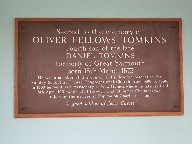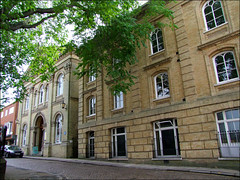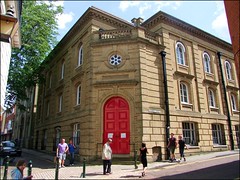| |
|
Princes
Street URC, Norwich This thoroughly urban United
Reformed Church is shoehorned into its site on the corner
of narrow Princes Street and Redwell Street, facing
across to St Peter Hungate, now home to the Hungate
Medieval Art centre. The yellow brick frontage is
Classical in style, with three bays under a simple
pediment, with the church's other buildings ranging
westwards and making an imposing second entrance on the
corner. The frontage was redone in the 1990s with the
insertion of glass doors, opening up a pleasing vista
from the street to the Father Willis organ at the far
end, although in fact this church is open to wanderers
most mornings.
It was
built in 1869 as Princes Street Congregational church to
the designs of the major Norwich architect Edward
Boardman, who was a member of the congregation here. The
extended range to the west is of a decade later, the note
of gravitas arising, perhaps, from non-conformism's
increasing influence in this poor district.
| The
interior is a joy, decked out in the rich, bright
colours of the High Victorian period. The wrought
iron screen to the three-sided gallery is
exquisite, a tribute to the patronage of the
Dixon family who were iron founders in Norwich.
The numbered pews are original, making this all
of a piece, and one of the best interiors of the
1860s and 1870s in the city. The United
Reformed Church are fairly stolid middle-stumpers
in the labyrinthine world of non-conformism, but
a reminder of headier days is the memorial to
Oliver Fellows Tomkins, a former member of this
church, who, in 1899, went as a missionary to
New Guinea, where he laboured until 8th April
1901, when his life was taken by the natives.
He was 28 years old. A few short years would
separate the demise of Oliver Tomkins from the
loss of so many other boys of this church in the
hell of France and Flanders: the elegant marble
plaques recording more than forty names still
flank the entrance into the church today.
|
|
 |
|
|
|


